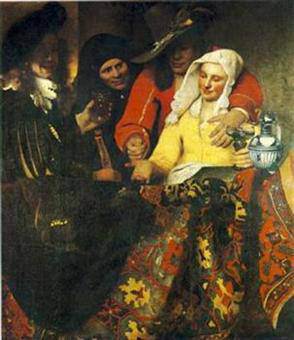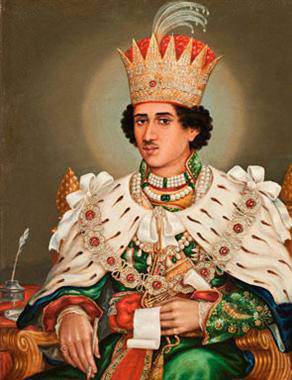
Johannes Vermeer
The Procuress
1656
The Young Vermeer, National Galleries of Scotland Three early paintings by Johannes Vermeer are reunited in a rare display at the National Galleries of Scotland from December 8th 2010 until March 13th, 2011]]>
Source: National Galleries of Scotland
“The Young Vermeer” presents a unique opportunity to see three magnificent works by this much loved artist and discover how he became one of the most iconic painters of the Dutch Golden Age. This is the first exhibition in Scotland devoted to the artist and the only UK showing of this exhibition.
Johannes Vermeer (1632-75) is world-renowned for his meticulous paintings of Dutch interiors. Considering his current popularity, surprisingly little is known about his early career. He was born the son of an innkeeper and art dealer in 1632 in Delft. Nothing is known for certain about his training but he obviously was familiar with the latest trends in Dutch and Flemish painting. He produced few works during his career, of which less than forty survive. The National Gallery of Scotland is one of only 17 galleries worldwide that holds a work by Vermeer in its collection. The three paintings on show in this exhibition are strikingly different from his later works which concentrate almost exclusively on domestic interiors. These paintings, created before the artist was 25, suggest a tantalising experimental phase in his early career as he explored classical and biblical subjects. Nonetheless, each picture reveals his fascination with light and colour that so captivates audiences today.
The first painting, Diana and her Nymphs, is thought to have been created soon after Vermeer had entered the painters’ guild in 1653. It is a serene and intimate painting, showing the goddess Diana and her companions in a wooded landscape. Recent examination has shown that the blue sky that once covered the upper right of the painting contains pigments that were only introduced after Vermeer’s death and so could not have been painted by the artist himself. Following meticulous research into the paint layers, it was decided to over-paint this part in a dark tone that matches the foliage of the adjacent trees.
Christ in the House of Martha and Mary, from the National Gallery of Scotland’s collection, is the largest of Vermeer’s surviving works and possibly dates from slightly later than Diana and her Nymphs. The subject is taken from St Luke’s gospel and can perhaps be linked to Vermeer’s conversion to Catholicism in 1653. This painting may have been intended as a gift for his mother-in-law or for a clandestine Catholic church. The signature on the painting was not found until 1901 and the re-discovery of this early Vermeer sparked considerable attention in Dutch and British newspapers. It was subsequently bought by the wealthy Scottish collector W. A. Coats and after his death presented in his memory by his sons to the National Gallery of Scotland in 1927.
The last of the three paintings featuring in this exhibition is The Procuress, a brothel scene signed and dated 1656. The painting’s title, which was not given to this work until the mid-19th century, refers to the older woman who has arranged the meeting between the man and the young woman. The Procuress marks two significant shifts in the artists work: his move towards painting ‘genre scenes’, which show figures in everyday activities, and the development towards his mature style, rendering shapes in smooth and colourful hues of light and shade. Recent cleaning has revealed the magnificent vibrant colours and delicate treatment of the different surfaces and materials in this arresting picture.
Follow us on:


